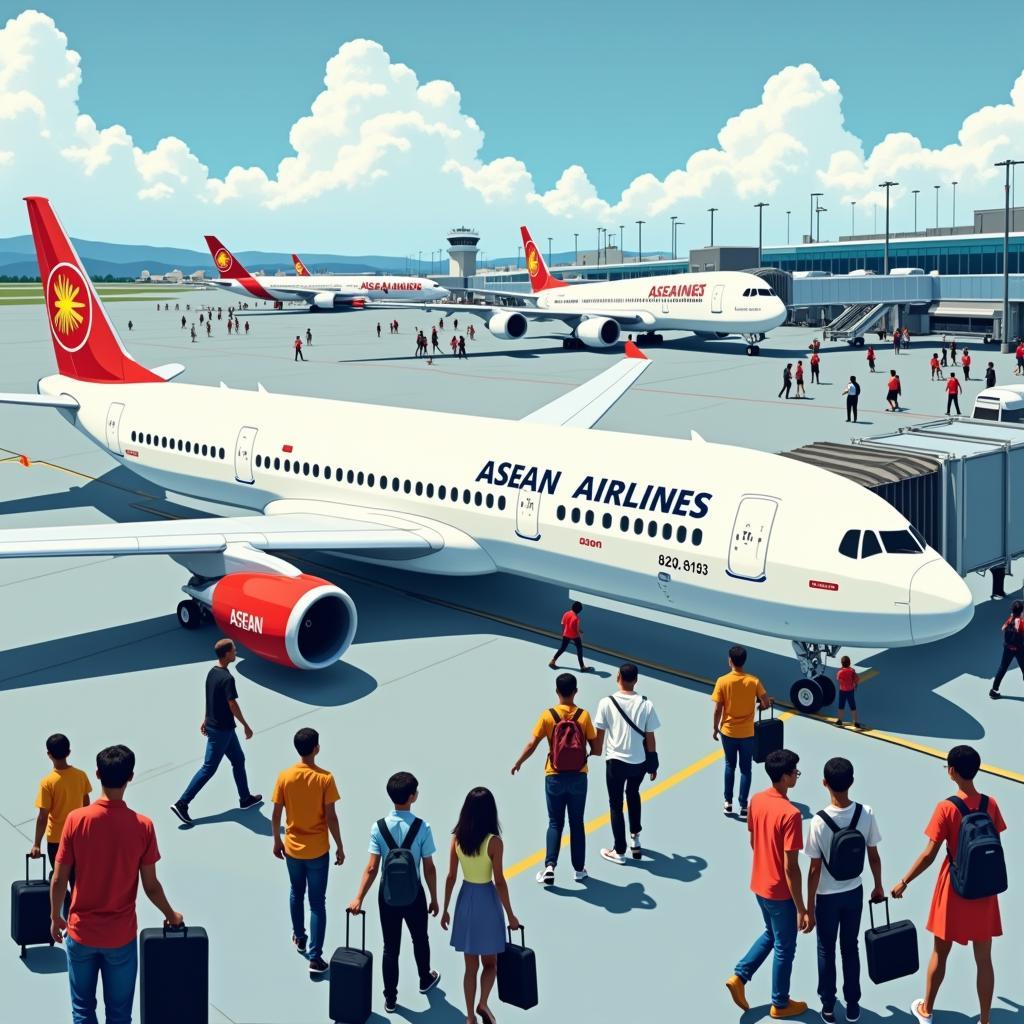The Asean Airline Operators Council (AAOC) plays a vital role in fostering collaboration and growth within the Southeast Asian aviation industry. Established in 1975 with just five founding members, the AAOC now boasts a membership of 10 prominent airlines across the region, serving as a unified voice for its members on issues of common interest.
 AAOC Annual Meeting
AAOC Annual Meeting
The Importance of the AAOC in a Rapidly Growing Region
The AAOC’s significance is amplified by the burgeoning aviation market in Southeast Asia. With its rapidly expanding economies, increasing disposable incomes, and a young and vibrant population, the region has witnessed an unprecedented surge in air travel demand. The AAOC’s collaborative efforts are crucial in navigating the complexities of this growth, ensuring sustainable development, and optimizing opportunities for its members.
Key Functions and Objectives of the AAOC
The AAOC serves as a platform for its member airlines to collaborate on a wide array of issues, aiming to enhance operational efficiency, safety standards, and passenger experience. Some of its key functions and objectives include:
-
Promoting Cooperation and Coordination: The AAOC facilitates regular dialogues and knowledge sharing among member airlines, fostering a spirit of cooperation and harmonization of policies and practices.
-
Enhancing Safety and Security: The council prioritizes the implementation of stringent safety and security measures, aligning its standards with international best practices to ensure the highest level of passenger safety.
-
Facilitating Industry Growth: The AAOC actively engages with regulatory bodies and stakeholders to advocate for policies that promote fair competition, infrastructure development, and sustainable growth of the aviation sector in the region.
 ASEAN Airlines at a Busy International Hub
ASEAN Airlines at a Busy International Hub
Challenges and Opportunities for the AAOC
While the AAOC has made significant strides in advancing the interests of its member airlines, it faces ongoing challenges in a dynamic and ever-evolving industry. Some of the key challenges include:
-
Competition from Low-Cost Carriers: The rise of low-cost carriers in the region has intensified competition, requiring full-service airlines to adapt their business models and enhance efficiency to remain competitive.
-
Infrastructure Constraints: The rapid growth in air travel demand has put a strain on airport infrastructure in some parts of Southeast Asia, leading to congestion and capacity limitations.
-
Navigating Regulatory Differences: Harmonizing regulations and policies across different ASEAN member states remains a complex issue, requiring ongoing dialogue and collaboration.
Despite these challenges, the AAOC has a unique opportunity to leverage its collective influence to advocate for policies that promote sustainable growth and development of the aviation industry in the region. By working closely with governments, regulatory bodies, and industry stakeholders, the AAOC can play a pivotal role in shaping the future of air travel in Southeast Asia.
Conclusion
The ASEAN Airline Operators Council has been instrumental in fostering collaboration, enhancing safety, and facilitating growth within the Southeast Asian aviation industry. As the region continues to experience robust growth in air travel demand, the AAOC’s role in advocating for its members, promoting cooperation, and addressing challenges will become even more crucial in shaping the future of air travel in this dynamic and vibrant region.
